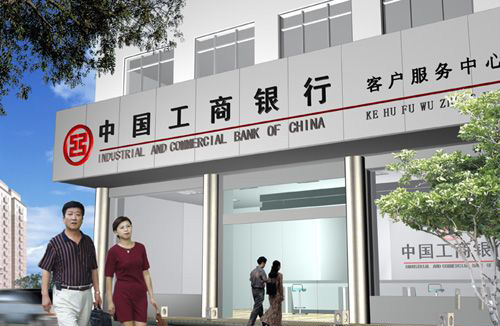 昨日,中国最大的商业银行中国工商银行获得了美联储的批准,以持有美国东亚银行80%股权的资格成为一家美国银行的持股公司。
昨日,中国最大的商业银行中国工商银行获得了美联储的批准,以持有美国东亚银行80%股权的资格成为一家美国银行的持股公司。
美联储同时批准了中国工商银行的股东——中央汇金投资有限责任公司和该公司的母公司中国投资有限责任公司,这两家公司的银行持股公司身份。同时,美联储官方网站昨日发布声明,中国银行和中国农业银行在美国开设分行的申请已批准通过。
美联储的该项决议已由美国司法部审查通过。中国的银行能够获得美国监管部门的批准,购买美国某当地银行机构的大部分股权,这还是有史以来的第一次,标志着美国银行市场已经为中国竞争者全面开放。美联储做出该项决议参照的是美国的《控股银行公司法案》。
美联储在其规定中声明:“董事会认为该项决议的圆满完成,不会给任何相关银行市场上的银行资源竞争或集中带来严重的负面影响”。
此次收购案涉及金额达1亿4000万美金,为总部位于北京的中国工商银行来美国发展创造了良好的契机。中国工商银行被批准在加利福尼亚州开设10家分行,在纽约开设3家分行。2011年1月,中国国家主席胡锦涛赴美国进行国事访问,中美两国约有60家公司在两国首脑那次访谈期间达成了初次协议。
打开国门
古根海姆证券华盛顿研究小组(Guggenheim Securities’ Washington Research Group)的高级政策分析师Jaret Seiberg认为,美联储带领美国银行业对想要实行并购的中国银行“打开国门”,实际上是扩大了美国银行的市场价值。
Seiberg在给客户的提醒中说,“为获得在美国开设分支机构的资格,中国银行很可能会选择收购美国当地银行这一途径,如此一来,美国市场上将会出现很多收购兼并案。”
美联储的公告显示,2011年末,中国工商银行以25万亿美元的资产总额荣升为中国第一大银行,其71%的股权归中国政府所有。总部位于香港的东亚银行则是一个家族企业,李国宝担任董事长。
根据美联储的公告,在中国分别位于第三、第四大国有银行地位的中国银行和中国农业银行,分别获得在美国芝加哥开设联邦分支和在纽约开设国家授权分支机构的资格。
广阔的平台
2010年,中国工商银行以约8030万加元(约合8020万美元)的价格收购了加拿大东亚银行70%的股权。对此,中国工商银行董事长姜建清当时就直言其目的是“为工商银行日后在北美地区扩展业务和分布网络提供一个更广阔的平台”。
中国其他银行也试图把业务扩展到美国境内。总部位于北京的中国民生银行曾计划收购美国联合银行控股公司的大部分股权,但这个计划因2009年11月美国联合银行控股公司的破产而胎死腹中。破产当时,民生银行仅持有美国联合银行控股公司9.9%的股权,它最终没法顺利实行此次并购并非因为遭到美国当局的拒绝,而是因为它没有时间了——当时有人如此评价这起失败的并购案。
中国银行在美国开设分支机构也有先例。2007年,美联储宣布批准中国招商银行在纽约开设一个分支机构,这也是15多年以来中国银行第一次在美国当地开设分支机构。中国工商业银行在美国开设第一家分支机构是在2008年10月。
Industrial & Commercial Bank of China (601398) Ltd., the biggest Chinese lender, won Federal Reserve approval to operate as a U.S. bank holding company with the purchase of an 80 percent stake in Bank of East Asia Ltd. (23)’s U.S. unit.
The Fed also approved bank holding company status for ICBC shareholder Central Huijin Investment Ltd. and that company’s parent, sovereign fund China Investment Corp., and applications by Bank of China Ltd. and Agricultural Bank of China Ltd. to open U.S. branches, according to statements posted yesterday on the regulator’s website.
The decision, which also was reviewed by the Department of Justice, marks the first time regulators have allowed a Chinese bank to buy a majority stake in a U.S. depository institution, and signals the most significant opening yet of the U.S. banking market to Chinese rivals. The Fed made the determinations under the Bank Holding Company Act.
“The board has concluded that consummation of the proposal would not have a significantly adverse effect on competition or on the concentration of banking resources in any relevant banking market,” the Fed said in its order.
The $140 million acquisition gives Beijing-based ICBC 10 branches in California and three in New York, a toehold for U.S. growth. The initial agreement in January 2011 was among as many as 60 signed by Chinese and U.S. firms during President Hu Jintao’s visit for talks with President Barack Obama.
‘Opens the Door’
The Fed’s ruling may boost the value of U.S. banks as it “opens the door” for Chinese lenders to pursue mergers and acquisitions, said Jaret Seiberg, senior policy analyst at Guggenheim Securities’ Washington Research Group.
“This could accelerate M&A as Chinese banks may look to acquire regional banks in order to establish a U.S. footprint,” Seiberg wrote in a note to clients.
ICBC was the largest bank in China at the end of 2011, with $2.5 trillion in assets, and is about 71 percent-owned by the government, according to the Fed’s order. Bank of East Asia, based in Hong Kong, is run by the family of Chairman David Li.
Bank of China, the third-largest China-based bank, received approval to open a federal branch in Chicago, while Agricultural Bank, the fourth-largest, received approval to open a state- licensed branch in New York, according to the Fed.
‘Strong Platform’
ICBC bought a 70 percent stake in Bank of East Asia’s Canadian unit for about C$80.3 million ($80.2 million) in 2010 to gain a “strong platform to further expand our businesses and network across North America,” Chairman Jiang Jianqing said then.
Other Chinese banks have sought to expand in the U.S. An attempt by Beijing-based China Minsheng Banking Corp. (600016) to buy a controlling stake in UCBH Holdings Inc. ended when UCBH collapsed in November 2009. Minsheng, which held a 9.9 percent stake, couldn’t complete the deal because it ran out of time, not because the plan was rejected by U.S. officials, a person briefed on the matter said at the time.
Chinese banks previously have been allowed to open U.S. branches. In 2007, the Fed cleared China Merchants Bank Co. to open a branch in New York, making it the first Chinese bank to establish a U.S. presence in more than 15 years. ICBC opened its first U.S. branch in October 2008.
 昨日,中国最大的商业银行中国工商银行获得了美联储的批准,以持有美国东亚银行80%股权的资格成为一家美国银行的持股公司。
昨日,中国最大的商业银行中国工商银行获得了美联储的批准,以持有美国东亚银行80%股权的资格成为一家美国银行的持股公司。
